The Mitsubishi Outlander has a decent reputation as a city- and family-friendly mid-sized SUV with reasonable capabilities as a light-duty off-road tourer.
And the Plug-in Hybrid EV version of the Outlander offers welcome fuel cost-savings over ICE vehicles and, in Exceed Tourer specification, it has a premium feel and packs plenty of standard features into a $70,000 package.
But is this seven-seater SUV worth it? And how does it perform as a hybrid?
Read on.
Mitsubishi Outlander 2023: Phev Exceed 5+2 Seat (awd)
| Engine Type | Inline 4, 2.4L |
|---|---|
| Fuel Type | Premium Unleaded/Electric |
| Fuel Efficiency | 1.5L/100km (combined) |
| Seating | 7 |
| Price From | $63,030 - $72,490 |
| Safety Rating |
|
Does it represent good value for the price? What features does it come with?
The Mitsubishi Outlander Exceed Tourer PHEV has a manufacturer suggested retail price of $68,490, but our test vehicle had floor mats ($202), pushing its price to $68,692.
The standard features list is extensive and includes a 9.0-inch multimedia touchscreen, a 12.3-inch digital driver display, wireless smartphone charging, a BOSE sound system, multi-zone climate control, a leather-trimmed steering wheel, head-up display, heated massage front seats, two-tone leather appointed seat trim, panoramic sunroof, a powered tailgate, and 20-inch two-tone alloy wheels.
Exterior paint options for the Exceed Tourer are white diamond and black diamond.
Be warned though: this Outlander does not have a spare tyre – not even a space-saver.
Is there anything interesting about its design?
The Outlander is a pleasant-looking vehicle, especially in Exceed Tourer spec.
The range incorporates Mitsubishi’s Dynamic Shield front-end that was so divisive at launch years ago – I didn’t like it – but it has garnered plenty of fans in the years since – yep, including me.
.jpg)
The top-shelf Exceed Tourer manages to pull off a dual-tone look inside and out – black roof, white body, and black and dark grey leather trim with bronze/orange stitching, as well as bronze/orange soft-touch arm-rests, centre console top, sections of the dash and elsewhere.
The big 20-inch machined alloy wheels add to the overall classy look.

How practical is the space inside?
It’s a family-friendly and functional interior with a premium feel about it all.
Comfortable leather seats, soft-touch surfaces, easy-to-use multimedia system, and plenty of charge points (USB-A and USB-C up front and two USBs for the second-row passengers) and storage spaces – all those elements and more add up to a cosy cabin in which driver and passengers can spend a chunk of time on lengthy road trips.
Nice touches such as the heated steering wheel and the heated front seats, which also have the massage function, merely top off what is an impressive cabin.
.jpg)
There is wired charging for smartphones with Apple CarPlay or Android Auto, as well as a wireless charging pad for Apple CarPlay-enabled phones.
There are also 240v/1500W power outlets.
The 12.3-inch high-resolution digital driver display is simple enough to navigate and cycle through its functions and the 10.8-inch head-up display is a handy addition.
.jpg)
The driver also gets an eight-way power adjustable seat, so it’s easy enough to dial-in your preferred driving position.
This Outlander’s seats are comfortable with satisfactory room for everyone, though the third row is a bit squeezy for anyone other than the one height-challenged mate who you ironically call “Tall Timber”.
.jpg)
The second row is a 40:20:40 split configuration, while the third row is 50:50.
In terms of packing space, according to Mitsubishi, you can count on a 163-litre boot (when all seats are up and in use), 478 litres when the third row is folded down flat, and 1473 litres of useable space when the second and third rows are stowed away.
What are the key stats for the engine and transmission?
The Outlander PHEV has a 2.4-litre four-cylinder petrol engine (delivering 185kW and 450Nm), an electric motor on the front and rear axles, and a lithium-ion battery pack with a total capacity of 20kWh.
The PHEV’s EV-only driving range has increased from 54km in the previous-gen Outlander to 84km in this line-up.
.jpg)
It has a single-speed transmission and drive modes in this vehicle include Eco, Normal, Power, Tarmac, Gravel, Snow and Mud.
It has three power-use modes: EV Mode (“perfect for low to medium speeds in urban areas”, according to Mitsubishi), Series Hybrid Mode (“When accelerating or climbing hills, the hybrid petrol engine can be used to generate additional power while the vehicle runs on motor power”), and Parallel Hybrid Mode (“For high-speed driving such as overtaking vehicles on the highway, the vehicle runs on engine power while being assisted by the electric motor”).
What's it like as a daily driver?
There’s no denying the appeal of a vehicle that doesn’t require you to spend much cash on fuel – especially during times of skyrocketing petrol and diesel prices – but there’s more to like about this vehicle than just its ability to embrace something other than fossil fuel.
In terms of exterior dimensions, this PHEV is 4710mm long (with a 2706mm wheelbase), 1862mm wide, and 1745mm high.
So, it’s an easy vehicle to manoeuvre around city and suburban streets with light but sharp steering and a tight turning circle of 11m.
The teaming of a 2.4-litre four-cylinder petrol engine and two electric motors works seamlessly well and you’d be hard-pressed really to notice any difference or switching between systems as you drive, unless you’re scrutinising engine and power usage on the driver’s display screen – and your eyes should be on the road anyway.
The Outlander PHEV has plenty of power and, no matter how much energetic driving you may be doing at any one time, it still remains very smooth and pleasingly quiet.
.jpg)
It’s also rather enjoyable to drive: throttle response is sharp and there’s plenty of punch off the mark and zippiness around town when you absolutely need it.
The PHEV’s EV-only driving range is a listed 84km but our test vehicle chewed through most of its battery power on a 110km highway trip through hilly territory. Regenerative braking regained very little of that used power and the Outlander switched to wholly rely on petrol for the remaining 30km or so of that trip.
Worth noting is the fact you can adjust the degree of regenerative braking via the paddle shifters on the steering wheel: use the left to add more, and the right to ease up.
It has a single-speed transmission and drive modes in this vehicle include Eco, Normal, Power, Tarmac, Gravel, Snow and Mud, which all tweak engine, electric motor, transmission and other factors to suit the selected mode.
Other than that, ride is quite firm, handling is civilised and, overall, this Outlander is rather pleasant on sealed surfaces.
What's it like for touring?
Not too shabby, as long as you stick well within the parameters of the kind of “off-road” terrain an AWD SUV is built to handle best – well-maintained gravel roads and dirt tracks in dry conditions – or, at worst, rain-splattered sealed surfaces.
The Outlander has merely satisfactory off-road measures of 18.3 (degrees approach angle), 22.2 degrees (departure), 18 degrees (ramp breakover), and 203mm of ground clearance (unladen). But this is a city-friendly vehicle, not a rock-crawling machine, so what do you expect?
It does feel nimble in the bush though (because steering is sharp), visibility is good all-round, and it settles well on gravel and dirt tracks at speed, only ever skipping around a bit on rougher sections, due to its firm suspension and road tyres.
You can switch drives modes to either Gravel, Snow or Mud to best suit the terrain on which you’re driving, but, really, with the Outlander’s lack of ground clearance, and its road-biased tyres and 20-inch wheels, this SUV is ultimately hamstrung by its cityfied physicality.
But, having said (written) that, this is still a handy dirt-road tourer, yielding comfortable and controlled ride and handling, as well as an overall refined driving experience, only ever becoming a bit too rattled when the road or track surface becomes lumpy and bumpy.
Worth noting – and expected – is the fact that it did chew through battery power on a minor stretch of soft beach sand. And, for that reason – and the fact the Outlander is quite low – I’d avoid driving this SUV on any sand, other than very firm-packed sand for only a very brief period of time. Sand-driving puts heavy stress on a vehicle and I reckon the Outlander would end up bellying out when driving through deeper wheel ruts on a beach.
As mentioned earlier, this Outlander does not have a spare tyre. Yeah, sure the electric motor over the rear axle chews up a bit of room, but the absence of a spare – even a space-space-saver – is a disappointment, especially if you’re considering using your PHEV as a touring vehicle. A puncture repair kit is provided.
Towing capacity is 750kg (unbraked) and 1600kg (braked).
The bonus for Outlander buyers is their access to a stack of Mitsubishi accessories, including nudge bar (polished or black), roof rack cross bars, tinted hood protector and more.
How much fuel does it consume?
The Mitsubishi Outlander Exceed Tourer PHEV has a listed fuel consumption of 1.5L/100km on a combined cycle, but I’d reckon you have to be pretty lucky to get anywhere close to that figure.
Having said that, if your daily driving distances are within this PHEV’s official electric driving range (84km) and you’re able to drive in EV Mode most of the time, then at the very least you will have slashed your fuel costs.
.jpg)
Our actual fuel consumption on this test, as measured from pump to pump, was 9.9L/100km. Dash-indicated fuel consumption was 6.1L/100km.
Our dash-indicated power usage was 19.2kWh/100km. This PHEV seemed to chow through most of its onboard battery power quite swiftly on our drive home, without recouping much via regenerative braking on long downhills, even when we tried cycling through the regen modes in an attempt to optimise power regain.
This Outlander has 20.0kWh battery capacity and a 56L fuel tank.
.jpg)
Mitsubishi reckons that if you’re charging off a standard household power point it will take “approximately” 9.5 hours to fully charge your Outlander – or 6.5 hours if you’re using a home or public charging device.
Things speed up considerably if you use a public rapid recharging station – in that case, Mitsubishi claims that your Outlander Plug-in Hybrid EV will reach 80 percent capacity in 38 minutes.
Warranty & Safety Rating
What safety equipment is fitted? What safety rating?
The Mitsubishi Outlander has the maximum five-star ANCAP safety rating from testing in 2022.
It has eight airbags (driver and passenger front, driver and passenger front side, driver knees, centre, and curtain) , as well as a raft of driver-assist tech including AEB with pedestrian/cyclist/junction assist, adaptive cruise control, blind-spot assist, lane departure warning, lane-keep assist, driver attention monitoring, emergency lane-change warning (with auto braking), traffic sign recognition, front and rear parking sensors, as well as an around-view monitor.
There are two ISOFIX child seat anchors and three top-tether points.
What does it cost to own? What warranty is offered?
The Outlander range is covered by a 10-year/unlimited kilometre warranty – as long as servicing is completed on time by an authorised Mitsubishi dealership – and 10 years capped price servicing and 12 months roadside assist.
Outlander service intervals are scheduled at 12 months or 15,000km. Service costs can officially range from $299 through to $799.
The battery set-up has an eight-year/160,000km warranty.
Verdict
The Mitsubishi Outlander PHEV is a neat and tidy drive – and in Exceed Tourer spec it’s even better because this is a quietly classy vehicle.
Sure, this PHEV is pricey – you're paying to help save the planet so stop your whingeing – but it’s nice to drive without being spectacular and it’s quiet and refined. It’s also packed with plenty of features and driver-assist tech.
I reckon that if you reside in a city and all of your daily driving is done within coo-ee of your home, then you can likely get to and from work, with other trips of similar distance thrown into the mix, without the need to fill up with any go-juice during the working week.
If the way forward, before we all go full EV, is getting more and more well-executed PHEVs on the road, then the Outlander is certainly helping to pave the way.
Pricing Guides




.jpg)

.jpg)
.jpg)
.jpg)
.jpg)
.jpg)
.jpg)
.jpg)
.jpg)
.jpg)
.jpg)
.jpg)
.jpg)

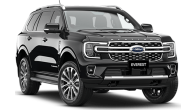

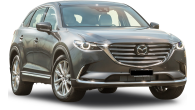












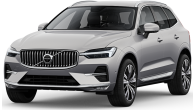






.png)
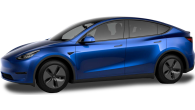





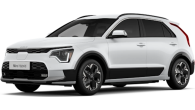


.jpg)


.jpg)
.jpg)
.jpg)
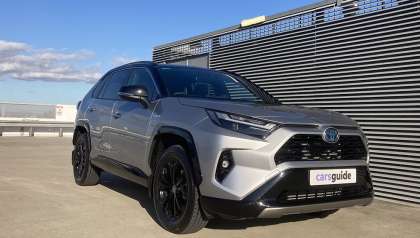

.jpg)

.jpg)
Comments